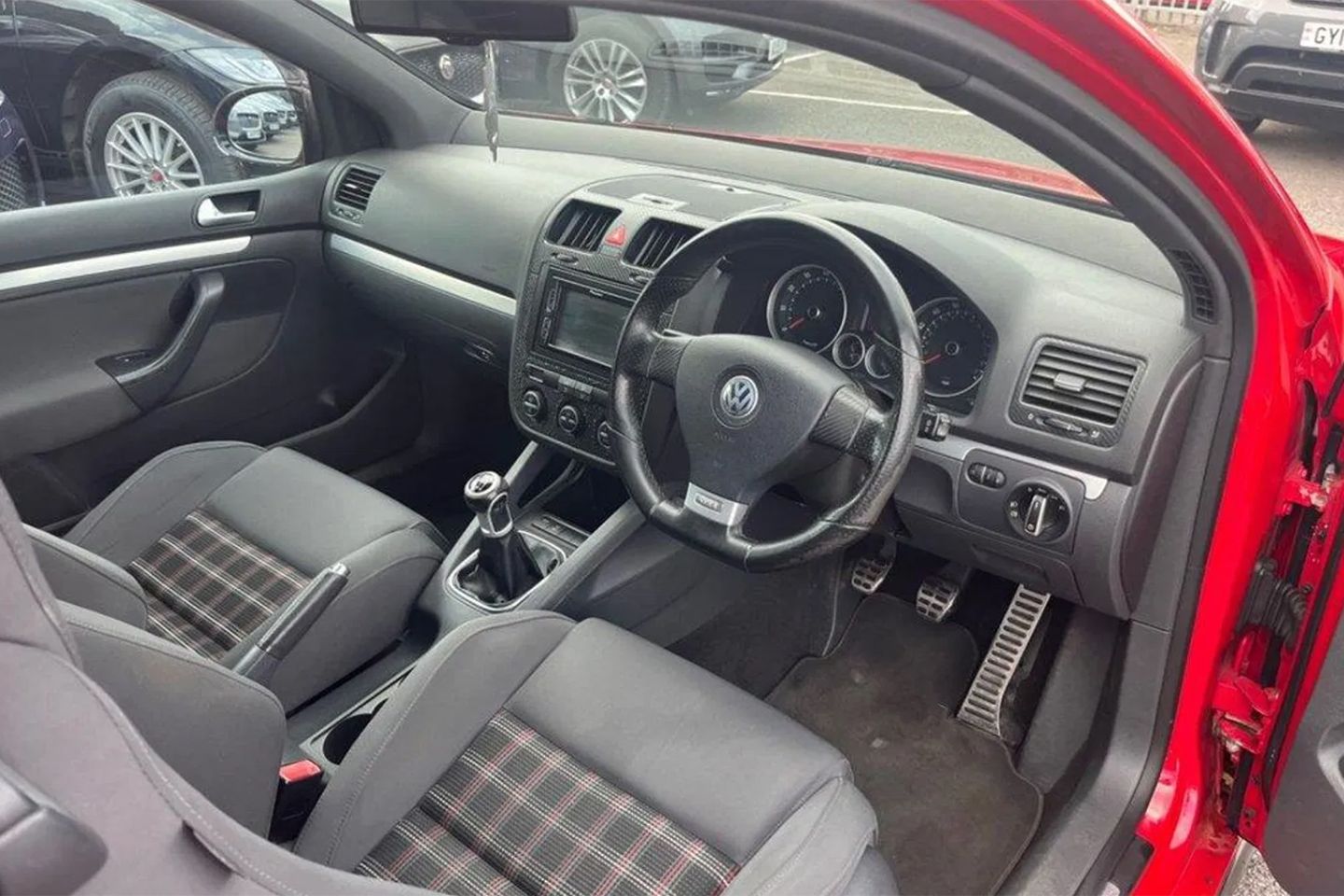Golf
VW Golf GTI (Mk5) | Shed of the Week

For Shed, a man with a permanently puzzled expression, life is full of conundrums. One headscratcher that he has never understood is why most of us think that Golf GTI seats should be covered in tartan cloth, or ‘plaid’ as the Americans like to call it.
It’s all the fault of a little old lady called Gunhild Liljequist. She wasn’t always a little old lady of course. Before joining Volkswagen as an interior designer in 1964 she was a porcelain painter and chocolate box decorator. At that time, VW was building Type 1 Beetles, Type 2 Transporter vans, Karmann-Ghia convertibles and not much else. Having been tasked with ‘sporting up’ the first Golf GTI of 1976, Gunhild came up with tartan upholstery and a golf ball gearknob. The tartan idea came from her own travels around the UK when she had been impressed by our ‘high-quality fabrics with checked patterns’ as she liked to call them. The golf ball gearknob was again nothing more than an entirely personal reflection of her own interest in, well, golf.
Not surprisingly perhaps, the red braces of the young Wolfsburg go-getters who thought they were on the brink of launching VW’s most exciting car ever didn’t spontaneously combust when they were shown Grunhild’s suggestions. You can see why. Even in 2024, any average Joe or Jolene asked to come up with the words that said ‘sport’ to them would take quite a while to reach tartan or indeed golf. Imagine how much resistance there would have been nearly half a century ago when tartan and golf were more commonly associated with shortbread tins than with sport.

Fortunately, VW board members who feared dust less than dynamism were well represented on the top table at Wolfsburg in the mid-’70s. They green-lit both of Gunhild’s ideas, starting the story of two of the most enduring interior touchpoints in automotive history. Or one anyway. The tartan will probably continue for the foreseeable because there’s nothing to stop it, but golf ball gearknobs are certain to fade away as the whole concept of gears becomes obsolete.
Sadly, Gunhild died a couple of years ago aged 86. We’re not sure what she thought of cars like the 2004-on Mk5 Golf GTI, but contemporary reviewers rated the hell out of it. Part of that was down to sheer relief at the replacement of the leaden Mk4 GTI but the Mk5 was more than just a reputation-saver, it was a very nice car in its own right. The EA113 turbo four wasn’t overburdened with horsepower at 200hp, but that only encouraged you to push the chassis harder, an enjoyable pursuit thanks to the car’s low weight of not much more than 1,300kg. Torque of 207lb ft was more than enough to keep you spinning along, so you could get out of the Mk5 at the end of a fast drive thinking that you had played a decent part in it. The 0-62mph was 7.2 seconds, it would hit more than 145mph flat out and 40mpg was easily achievable.
Our 2005 Shed isn’t perfect – why would it be for £1,995 – but underneath the scraped alloys, scabby front wheelarch, stick-on carbon trim pieces and marmalised boot badge it looks like there might be a bit of life left in this old dog. Five owners isn’t a high number for a near-20-year-old car and nor is the mileage of 107,000, which checks out on the MOT history. The most recent test was carried out last month (June ’24). Tests in the previous two years revealed some suspension corrosion but that had evidently been cleared up in time for the 2024 examination as there were no advisories this time around.

The EA113 wasn’t the most refined motor VW ever built but we’re told that there’s a service history here. A new cambelt, water pump and clutch were fitted five years and 32,000 miles ago. That’s good news because the belt change on these isn’t the work of a moment owing to the location of the exhaust downpipery.
A rattle on startup that went away but came back shortly after could be signifying an end-of-life event for the fuel pump. Splits in the turbo’s dump valve diaphragm were common, as were coil pack failures. The DSG twin-clutch auto was arguably the best transmission from new but not so much from old, as here, when you’ll be glad you’ve got the more strongly constructed manual. Rear springs broke, uneven tyre wear was often a thing and air-con compressors blew but the cabin was well put together. As we can see here the tartan is still going strong, just like a Scotsman’s bagpipes, more’s the pity.










